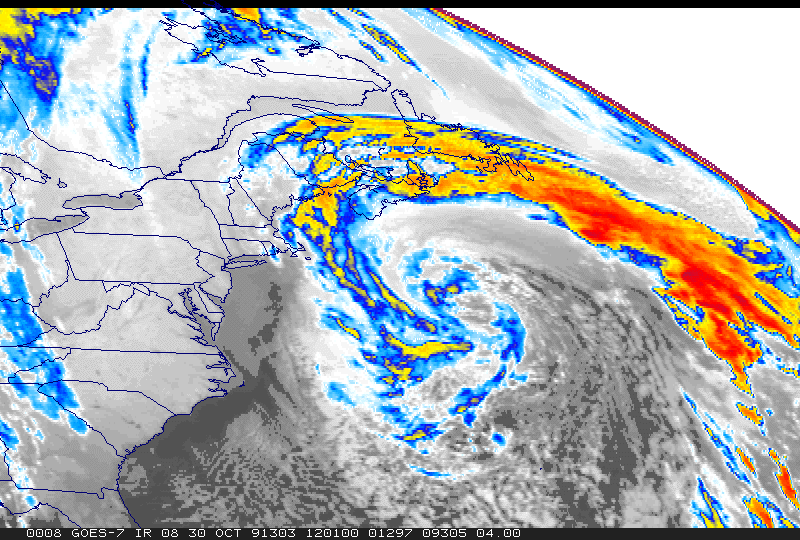
This GOES 7 color-enhanced infrared image (taken 1200 UTC October 30, 1991) shows an enormous mid-latitude cyclone that wreaked havoc along the entire Atlantic coast. This storm was called "the Perfect Storm" by the National Weather Service, and was the subject of a best-selling book. This storm is an excellent example of a "nor'easter," which is an extremely strong extratropical cyclone that may develop during the autumn along the east coast of the United States due, in part, to the contrast between continental polar (cP) air masses from Canada and milder, maritime air masses along the Atlantic coast. This storm developed along a cold front located off the east coast of the United States. A strong upper air low and remnant moisture from Hurricane Grace caused the storm to explosively intensify. During the storm, hurricane-force winds were reported on Cape Cod, Massachusetts, and flooding and record high tides occurred all along the mid-Atlantic and New England coastlines.